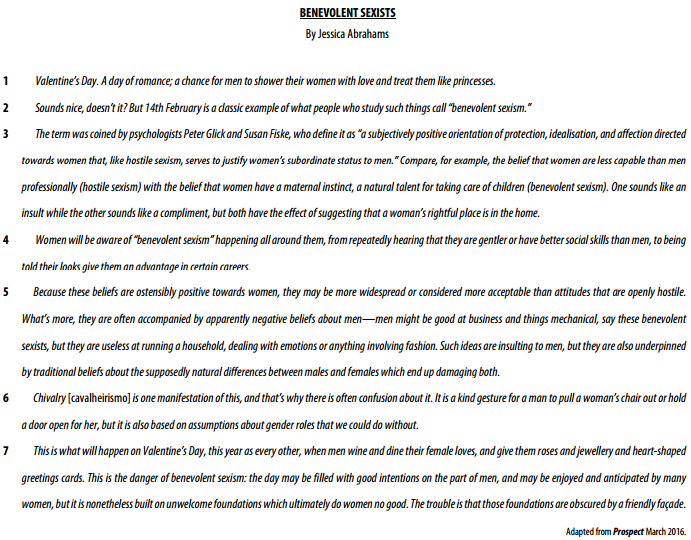Questões de Vestibular de Inglês - Pronome subjetivo | Subjective pronoun
Foram encontradas 25 questões
Question based on Text.


Adapted from: <http://www.theguardian.com/global-development-professionals-network/2015/oct/13/fighting-corruptionzombies-development-anti-corruption >.Access on: 03/11/2015.

The research was conducted as part of the carrier's "It Can Wait" campaign launched in 2010. It hopes to increase awareness of the dangers posed by using smartphones while one is behind the wheel. The study polled 2,067 U.S. residents ages 16-65 who use their smartphone and drive once or more per day.
Seventy percent of those surveyed admit they use their smartphones for a number of activities while they are driving: 61 percent say they text and 33 percent send email while they are behind the wheel. Posting or interacting on social media is also one of the most common activities that drivers engage in. Using Facebook ranks first on the list, with 27 percent of drivers logging in while driving. Other social media channels that keep drivers "multitasking" include Instagram and Twitter (14 percent) and Snapchat (11 percent).
The results also show that there is a deeper problem involved when people use social media while driving. Among those surveyed, 22 percent blame their addiction to social media.
Other revelations show 62 percent keep their smartphones within easy reach, and that 30 percent of those who post to Twitter while driving do it "all the time". Drivers also don't seem to run out of other activities using their smartphones since most apps are now easily accessed with just a simple tap. Because of this, 28 percent of drivers browse the web; 17 percent take selfies (or groupies); and 10 percent video chat.
"One in 10 say they do video chat while driving", said Lori Lee, AT&T's senior VP for global marketing. "I don't even have words for that". AT&T plans to expand the "It Can Wait" campaign in order to add more focus on the topic of texting while driving by including other driving distractions that result from using the smartphones. "When we launched 'It Can Wait' five years ago, we pleaded with people to realize that no text is worth a life", said Lee. "The same applies to other smartphone activities that people are doing while driving. For the sake of you and those around you, please keep your eyes on the road, not on your phone". AT&T will also launch a nationwide virtual reality tour in summer in order to spread the word that driving and using a smartphone don't and will never mix.
INSTRUÇÃO: A questão refere-se ao texto abaixo.
Victoria and Albert: how a royal love changed culture
By Lucinda Hawksley


Disponível em: <http://www.bbc.com/culture/story/20150623-victoria-albert-cultural-impact>.
Acesso em: 3 ago. 15. (Parcial e adaptado.)
( ) his (linha 28) refere-se a Albert (linha 27).
( ) they (linha 31) refere-se a artists (linha 30).
( ) whose (linha 35) refere-se a The queen (linha 34).
Assinale a alternativa que preenche correta e respectivamente os parênteses, de cima para baixo.
